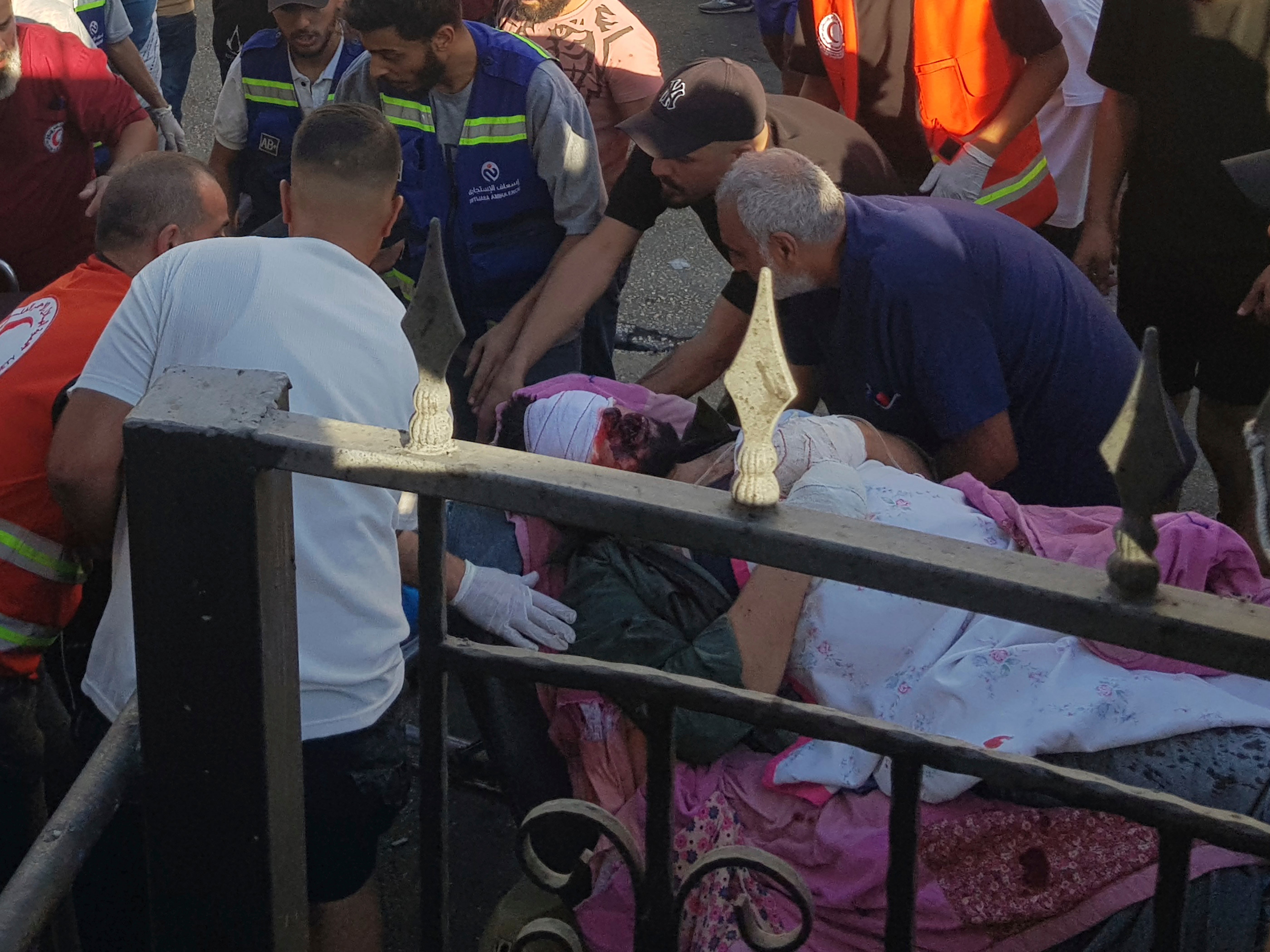The Hezbollah pager attacks prove that Israel has no strategy for peace
With the first anniversary of 7 October approaching, Israel is no closer to a resolution of the Gaza conflict – and making terrorists’ electronic devices explode will not help, says Bronwen Maddox

Paging devices used by Hezbollah forces in Lebanon and Syria exploded near-simultaneously on 17 September, leaving 12 dead and almost 3,000 injured. The following day later, walkie-talkies exploded all over Lebanon, killing 20 and injuring at least 400. Both attacks are widely assumed to be the work of Israel.
The scale of the attacks, as well as their theatrical nature, can be seen as a bid by Israel’s military and intelligence forces to repair their reputation, left in tatters following the 7 October Hamas attacks.
It could also represent an attempt by Israel to address the problem of its northern border. Visiting the area this week, I have seen the effects of the continual exchanges of rocket and missile attacks, which have led to 60,000 people being evacuated from Israeli towns. According to reports, Lebanese villages have also been evacuated as a result of the fighting.
Perhaps intended as a signal to Hezbollah (and its supporter Iran) to back off, the attacks will not enable Israel’s government to return residents to their homes. On the contrary, the attacks risk escalating the simmering conflict on the northern border into the regional war that the US and many of Israel’s neighbours have worked hard to avoid.
On Monday this week, a day before the pager sabotage attack, I visited the Israeli town of Kiryat Shmona near the Lebanese border. It was all but deserted.
This northern, square-shaped area of Israel, bordered by the Lebanese hills and the steep, bare cliffs of the Golan Heights, was never the most flourishing part of Israel given the hostilities; the roads to Damascus and Beirut have long been closed. But it was nonetheless a region of small farms of fruit and sheep and quiet tourism around the Galilee to the south.
Now, it is a ghost town, with its inhabitants relocated across Israel. Its mayor is scrabbling to fund his security needs, to stop the looting of abandoned apartments, houses and businesses.
Forests in the region are burned in patches from rocket strikes or from interception by the Iron Dome anti-missile system. Given it costs $100k per launch, and that there are now few residents to protect, Dome controllers now prioritise the defence of other Israeli regions.
The few remaining people say that fear of Hezbollah invasion led to the flight, rather than rockets.
Since 7 October there has been a lack of confidence that Israel’s military and intelligence can protect them. The prospect that residents will never return seems an increasing possibility.
Military commanders talk wistfully of a quick “in-and-out” strike across the border to bring more security. Analysts agree that it is hard to see how residents’ confidence would return without such action.
But that would be an escalation of the conflict, ultimately with Iran as well as its proxy Hezbollah. That is precisely what the US and Israel’s other allies do not want to see.
There may well be retaliation from Hezbollah and its allies for the strikes, but its form is not clear. Hezbollah, more than Hamas, works closely with Iran and will be guided by it.
Another Iranian proxy, the Houthis in Yemen, are having considerable success in disrupting shipping through the Suez Canal and Red Sea, and have twice struck at Israel with missiles. But the signs suggest Iran is unwilling to participate in a fiercer conflict. A broader war might prove hard to control, and would inhibit the new Iranian president’s efforts to secure sanctions relief.
Almost a year after the 7 October attacks, when Hamas killed around 1,200 Israelis and took 250 hostages, Israel is no closer to a resolution of the conflict – one of the greatest crises in its history. Its pursuit of Hamas in Gaza has led to the deaths of more than 40,000 Palestinians, according to Gaza authorities, and provoked huge international criticism.
More than 100 hostages remain in Gaza, although many are known or believed to be dead. Visiting Israel this week, it is striking to see the bitterly divided state of public opinion – between those who want the hostages brought home as a priority and those who favour the pursuit of Hamas even at the cost of the hostages’ lives.
Rising violence in the West Bank, including that by Israeli settlers, has led to the deaths of more than 600 Palestinians since 7 October and threatens to worsen the situation in a further front of conflict.
Meanwhile, Israel is coming under increasing international pressure for its actions in Gaza. Meeting and speaking with Israelis and Palestinians this week, peace seems as elusive as ever.
A possible path to more stable regional relations, through normalisation with Saudi Arabia and existing diplomatic relations with five Arab states, also remains elusive while the fighting in Gaza goes on.
With the year anniversary of the 7 October attacks approaching, Israel lacks a strategy for peace.
Bronwen Maddox serves as the director and CEO of Chatham House






Join our commenting forum
Join thought-provoking conversations, follow other Independent readers and see their replies
Comments